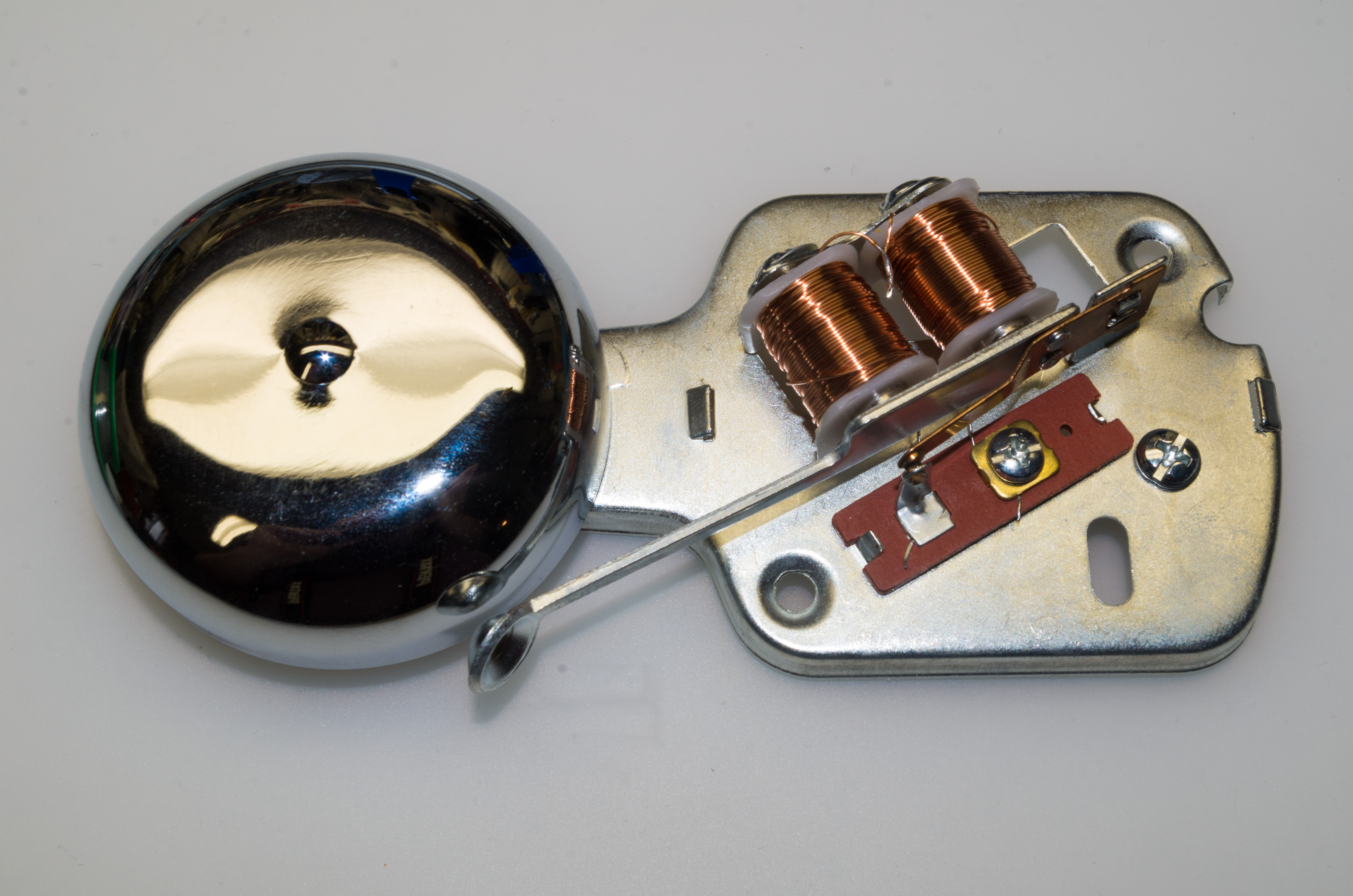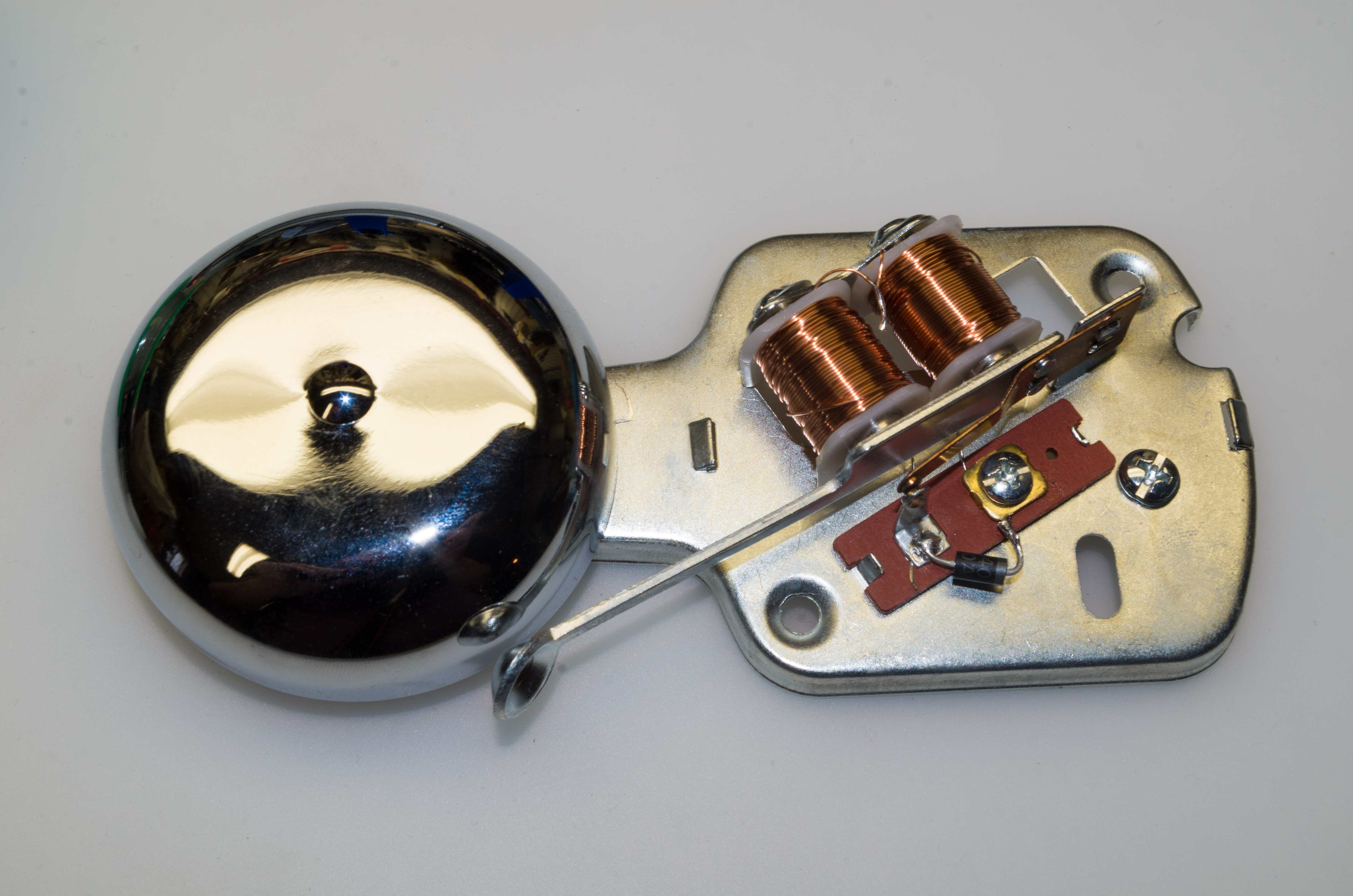Reducing EMI from an electromechanical bell
I bought one of these electromechanical bells to use in a project. I’m driving it with a Qwiic Relay. The problem I ran into was that the bell would turn on just fine, but it wouldn’t turn off.
My hypothesis was that the bell was generating enough EMI that it was interfering with the I2C signal going over the Qwiic cable, so the relay was never receiving the command to turn off.
I already had a flyback diode across the external terminals of the bell, but this was not sufficient. The bell is of the interrupter type, so the electromagnet is producing back EMF every time the contacts interrupt the current. And because the contacts are open, the back EMF can’t flow through the flyback diode across the external terminals. Since the back EMF has nowhere to go, it produces EMI. (At least, that’s my limited understanding of the phenomenon, given that I don’t know much about physics or electrical engineering.)
So, what I needed to do was install a flyback diode directly across the electromagnet, inside the bell. Luckily, I was able to find a decent place to solder each end of the diode, so this wasn’t difficult to do.
Apparently my hypothesis was correct, because this fix worked! Now the Qwiic Relay is able to receive the command to turn off even though the bell is ringing.
It’s worth noting that the original bell worked on either AC or DC. My modified version only works on DC, and now the polarity of the DC matters, because of the diode.
Original bell on left; modified bell on right.

